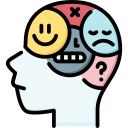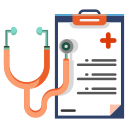
Phobias
- Featured
Featured
Frequently Asked Questions
Excessive and unreasonable fear of certain things, situations, or actions is a phobia. It is a form of anxiety disorder characterized by a persistent, intense fear disproportionate to the threat that the feared thing or circumstance poses.
There are three basic types of symptoms:
- Emotional Symptoms
- Behavioral Symptoms
- Physical Symptoms
Bad or traumatic experiences:It can occasionally result from traumatic occurrences or unfavorable contact with particular things, circumstances, or events.
Learned conduct: Either direct instruction or observation can be used to learn it. For instance, a youngster might respond similarly if they see their parent or sibling expressing dread or anxiety towards something.
Cognitive effects: Cognitive biases and negative thought patterns can support the emergence and perpetuation of phobias. Catastrophic thinking, in which one imagines the worst-case scenario, may increase anxiety and fuel the dread.
Classical conditioning and conditioning: They can be learned by classical conditioning, in which a neutral stimulus begins to be linked to a bad event or a frightened reaction.
CBT, or cognitive behavioral treatment: Identifying and confronting linked illogical attitudes and beliefs is frequently regarded as the first-line treatment.
Exposure therapy: It focuses on introducing people to the feared thing gradually and methodically so that they can face their concerns in a secure setting.
Medications: In some circumstances, doctors may recommend medications to treat the symptoms.
Techniques based on mindfulness: Deep breathing exercises and other mindfulness techniques can help people become more aware of their thoughts, emotions, and physical sensations.















